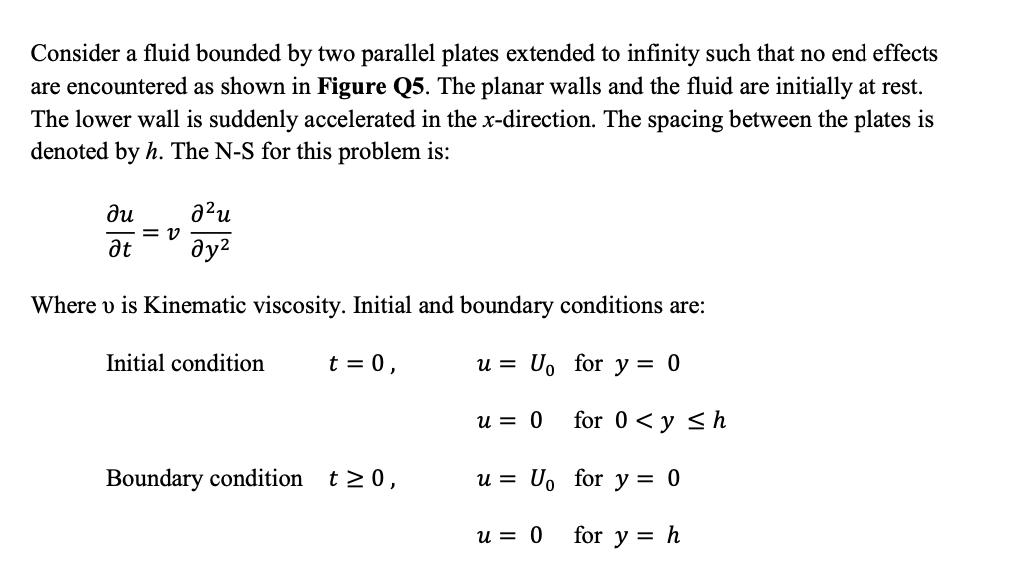Answered step by step
Verified Expert Solution
Question
1 Approved Answer
Consider a fluid bounded by two parallel plates extended to infinity such that no end effects are encountered as shown in Figure Q5. The

Consider a fluid bounded by two parallel plates extended to infinity such that no end effects are encountered as shown in Figure Q5. The planar walls and the fluid are initially at rest. The lower wall is suddenly accelerated in the x-direction. The spacing between the plates is denoted by h. The N-S for this problem is: 2u = V at Where v is Kinematic viscosity. Initial and boundary conditions are: u = Uo for y = 0 for 0 y h Initial condition t = 0, Boundary condition t 0, u = 0 u = Uo for y = 0 for y = h u = 0
Step by Step Solution
★★★★★
3.39 Rating (155 Votes )
There are 3 Steps involved in it
Step: 1
To solve this problem we can use the NavierStokes equation for an incompressible fluid ...
Get Instant Access to Expert-Tailored Solutions
See step-by-step solutions with expert insights and AI powered tools for academic success
Step: 2

Step: 3

Ace Your Homework with AI
Get the answers you need in no time with our AI-driven, step-by-step assistance
Get Started


